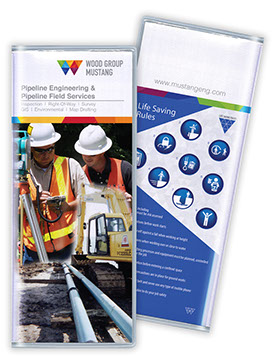Ask someone on a rig what they carry in their back pocket, and chances are they’ll pull out a tally book—scuffed, weathered, and packed with notes. For decades, these were known as pipe tally books, the go-to tool for tracking how much pipe was run in or out of the hole.
But here’s the thing: most crews don’t use them to actually tally pipe anymore.
Still, the name stuck. And the tool? It’s more useful than ever.
What Is a Pipe Tally Book?
Traditionally, a pipe tally book was used to track pipe footage during drilling. Crews would write down each joint’s length, connection type, and running order. That data was critical for knowing how deep they were, how much pipe had been run, and what was left to go.
But today, most of that tallying is done digitally—with rig systems, apps, or automated data capture.
So why do workers still carry tally books?
Because the pipe tally book evolved.
It’s now a rugged, pocket-sized drilling tally book used for everything from jotting down notes to sketching out equipment layouts or recording observations during a tour. It’s no longer about tallying footage. It’s about capturing information—fast, in the field, and in real time.
What Are They Used for Now?
Modern pipe tally books are less about pipe counts and more about situational awareness. Here’s how they’re used on drilling sites today:
- Noting daily goals and task assignments
- Writing down tool specs or measurements
- Logging pressure readings or fluid volumes
- Sketching rig setups or walkdown notes
- Tracking equipment changes or maintenance
- Capturing feedback during toolbox talks
- Recording incidents or near misses on the spot
They’re also handy for supervisors or company men doing rounds—anything that needs to be captured before it slips your mind.
Think of it as your drilling operations notebook—a personal assistant that fits in your pocket and doesn’t care if your gloves are dirty.
Why Field Pros Still Trust Tally Books
So why not just use a phone or tablet? A few reasons:
1. No battery required
A tally book doesn’t crash, die, or freeze. It works in the cold, in the rain, and in the middle of nowhere.
2. Quick and simple
No logins, no waiting. Flip it open, write, move on.
3. Rugged and field-tested
The best upstream oil and gas tally books are built with heavy-duty vinyl covers and sturdy spines.
4. Customizable to your workflow
Some tally books come with branded covers, QR codes linking to SOPs, or custom inserts for goal tracking or safety notes.
For many folks, it’s still the fastest, most dependable way to document what’s happening while it’s happening.
What to Look For in a Drilling Tally Book
If you’re outfitting a crew or standardizing your field tools, here’s what to look for in a modern drilling tally book:
- Slim profile that fits in back pockets
- Durable vinyl cover that resists oil, water, and wear
- Replaceable paper inserts
- Option for custom printing (logos, forms, QR codes)
- Lined or graph pages, depending on your needs
- Add-on sleeves or pockets for field cards or business cards
The best books are simple—but built for real-world use.
One Tool, Countless Uses
Even if pipe isn’t being tallied line-by-line anymore, the role of the pipe tally book hasn’t disappeared. It’s just shifted. It’s now about what workers need in the moment: a place to write, sketch, think, and track progress in the middle of a busy, high-risk job.
It’s still trusted. Still used daily. And still one of the most adaptable tools on site.
Browse Pipe Tally Books
Looking for durable tally books that hold up in tough conditions? Whether you need standard books for your crew or custom designs with your logo and inserts, we’ve got the right tools for the job.
Browse pipe tally books built for drilling, fieldwork, and everything in between.




